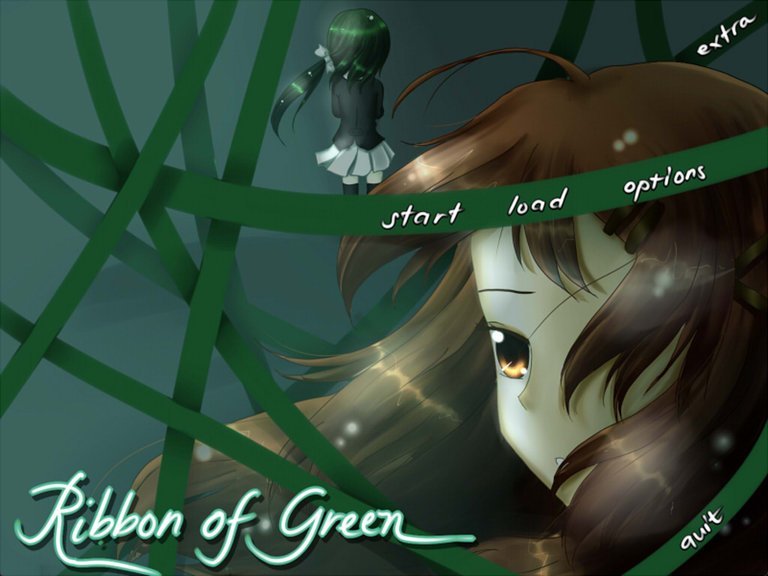- Release Year: 2012
- Platforms: Windows
- Publisher: Soyasushi Productions
- Developer: Soyasushi Productions
- Genre: Adventure
- Perspective: 3rd-person (Other)
- Game Mode: Single-player
- Gameplay: Choices and consequences, Visual novel
- Setting: School life, Urban

Description
Ribbon of Green is a dramatic, voice‑acted visual novel that follows Clarisse, a high‑school dropout who steals her future after failing an exam and blaming her best friend, Hanyuan, for her misfortunes. Twelve minutes of emotional dialogue, original anime art, and a choice‑based ending split the story into two paths where Clarisse must confront her guilt and decide whether to forgive herself and either get back to school or walk away from it all.
Ribbon of Green Free Download
Guides & Walkthroughs
Ribbon of Green: A Poignant Examination of Guilt and Redemption in the Visual Novel Format
Introduction
In an era dominated by sprawling RPGs and action-packed shooters, Ribbon of Green (2012) emerged as a quiet yet resonant gem in the visual novel (VN) landscape. Developed by the indie studio Soyasushi Productions, this 30-minute narrative explores themes of self-forgiveness, societal pressure, and fractured friendships through the lens of two teenage girls. Though modest in scope, the game’s emotional precision and intimate focus on character psychology cement its legacy as a poignant case study in minimalist storytelling.
Development History & Context
A Labor of Passion Under Constraints
Soyasushi Productions, a small team led by multidisciplinary designer Coren Baili (credited as Coren), leveraged the accessible Ren’Py engine to craft Ribbon of Green during NaNoRenO 2012, an annual game jam for visual novel creators. Baili served as writer, designer, and CG artist, supported by collaborators like character artist caydett (myapple) and composer SENTIVEdai. The project’s brevity (5,000 words) and two-week development window reflect the studio’s focus on thematic concision rather than scale.
At the time of its April 2012 release, the VN genre was gaining traction in Western indie spaces, with titles like Doki Doki Literature Club still years away. Soyasushi’s choice to prioritize full voice acting—a rarity for freeware VNs—demonstrated ambition, even as budget constraints limited the cast to six characters and nine unlockable CGs.
Narrative & Thematic Deep Dive
A Cyclone of Guilt and Lost Futures
The story follows Clarisse, a academically struggling teen who self-sabotages her future after failing a critical exam and alienating her best friend, Hanyuan. The game’s inciting incident—a chance reunion at a park swing set—unfolds as a dialogue-driven reckoning. Clarisse’s internalized shame (“I don’t deserve this”) clashes with Hanyuan’s quiet resilience, revealing layers of societal critique.
Themes of Elitism and Emotional Paralysis
The narrative subtly indicts meritocratic systems that measure worth through academic success, positioning Hanyuan as a victim of the same pressures despite her achievements. Lines like “In a society like this, if you lose hope, nobody would help you” underscore the fragility of adolescent identity in a “survival of the fittest” world. The two endings—redemption or resignation—reflect the binary choices faced by marginalized students, though critics might argue the brevity limits nuanced exploration.
Gameplay Mechanics & Systems
Elegant Simplicity, Missed Opportunities
As a kinetic novel (no branching paths beyond the final choice), Ribbon of Green prioritizes accessibility. The UI is uncluttered, with a clean menu structure for accessing the CG Gallery and Music Room. However, its lack of meaningful interactivity beyond a single decision (which triggers the final act) risks alienating players seeking agency.
Voice Acting: A Double-Edged Sword
While the fully voiced script—featuring Elissa Park (Clarisse) and Stephanie Quinn (Hanyuan)—adds emotional texture, uneven delivery occasionally disrupts immersion. Minor characters like Uncle Chang feel underutilized, their dialogue serving more as atmospheric filler than narrative necessity.
World-Building, Art & Sound
Aesthetic Melancholy
The anime/manga-inspired art style, with its soft pastels and expressive character sprites, evokes a dreamlike contrast to the story’s bleak themes. Backgrounds by BASSNovel, though static, anchor scenes in relatable locales: rain-soaked parks, dimly lit bedrooms. Caydett’s character designs emphasize visual symbolism—Clarisse’s disheveled uniform and Hanyuan’s pristine attire mirror their diverging paths.
Soundtrack as Emotional Scaffolding
SENTIVEdai’s piano-centric score oscillates between melancholic motifs and tentative hope, mirroring the narrative’s emotional arc. The absence of ambient noise in key scenes (e.g., the park sequence) amplifies the weight of dialogue, though some players may crave more environmental dynamism.
Reception & Legacy
A Niche Cult Classic
Despite its lack of Metacritic reviews or commercial traction, Ribbon of Green garnered a niche following among VN enthusiasts. Its focus on platonic female relationships and mental health distinguishes it from romance-centric peers, while its compact runtime makes it a frequent recommendation for genre newcomers.
Legacy-wise, the game’s use of Ren’Py democratized development tools for aspiring creators. However, its influence remains subtle, overshadowed by later genre titans. The 2023 MobyGames entry (added by user Koterminus) reflects renewed interest in preserving indie VN history.
Conclusion
Ribbon of Green is a flawed but emotionally potent artifact of indie game development. Its greatest strength—compressing complex themes into a 30-minute vignette—is also its weakness, leaving players craving deeper exploration of its world and characters. Yet, as a testament to the power of small-scale storytelling, it remains a touching study of guilt and resilience. While not revolutionary, it deserves recognition as a heartfelt entry in the visual novel canon—a fleeting, fragile experience that lingers like the echo of a friend’s unheard apology.
Final Verdict:
★★★★☆ (4/5) – A succinct, beautifully flawed meditation on forgiveness, ideal for VN fans seeking narrative-driven brevity over mechanical complexity.